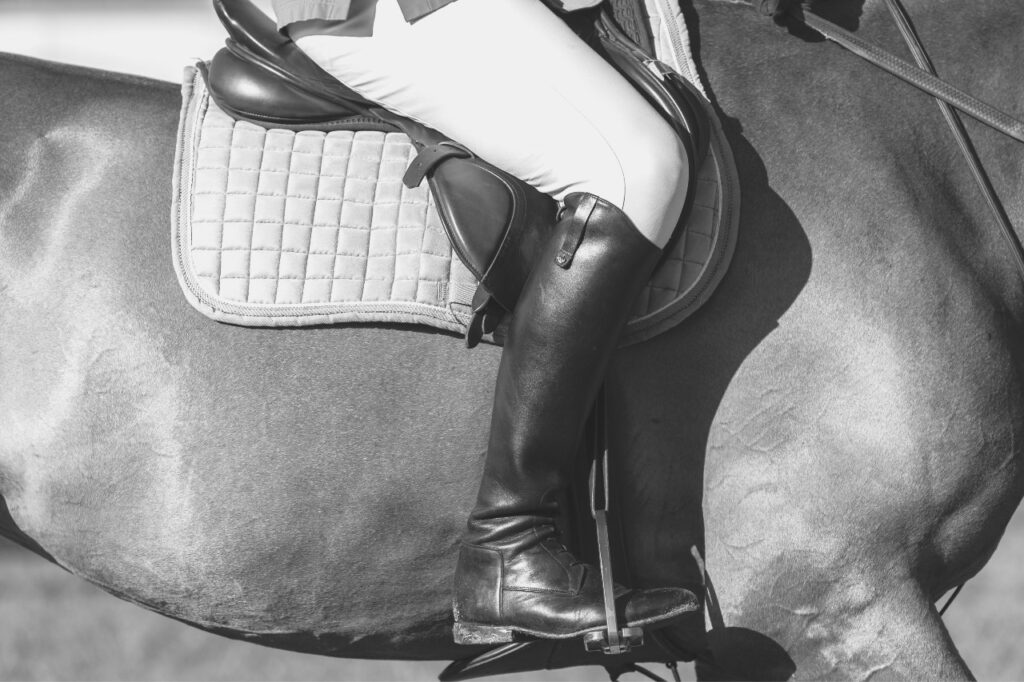Menu

Do you know when your horse is old? Or getting older? It is often said that a horse can live until it is somewhere between 20 and 35 years old. This depends of course on the breed, general health issues, living conditions, how the horse has been used throughout his life, and how robust he is genetically. Finding out when your horse is actually 'old' can be difficult. And it may be even more difficult to find out when it is time to slow down training. In short, the best advice is to pay attention to your horse and accept the fact that it can be 'old' when it is 15 as well as when it is 25. Here are some of the signs you should look out for.
You may also like to read: Loading horses: Just as hard as a dressage lesson
Important to keep in mind is this: Even though your horse starts to show some signs of getting older, he’s riding career is not necessarily over. Some horses can perform at a high level until they are 18-19, while others are worn down as 12-year-olds. It is ultimately up to you to realize how your horse is doing, and this can be difficult.

Exactly as it applies to humans, exercising keeps the horse healthy. Of course, a 25-year-old horse should not be trained in the same way as one of 15, just like an 80-year-old man rarely go for a marathon. But moderate exercise will keep your old horse strong and healthy. To make your elderly four legged friend last as long as possible, you are wise to slow down training.
The older horse should not just exercise every weekend. Instead, it should be lightly trained several times a week. Frequent, short ridingpasses where the work is not overdone is best.
Expect less of your horse. Lower the height of the fences or cut down on the dressage exercises. That way you reduce the risk of your horse being injured or losing motivation.
Varied training will keep your four legged friend happy and motivated despite his age. In addition, variation strengthens – just as it does for horses of all ages. Do not hesitate to go for a ride in the woods many times a week. Nature simply does not demand the same level of muscle, balance and endurance as if you go for a ride in the arena.
Before and after training it is important to give the old friend plenty of time to warm up and cool down, since the body is working more slowly.
Because of the fact that the horse's upper line changes when it gets old, you must be careful with the saddle. Probably, you should prepare for a professional saddle check during the latter years of your horse's life.

As mentioned, you cannot use the horse's age solely to determine its physical condition. Despite that, it can be interesting to compare the age of a horse to that of a human - just to have something to relate to. Just remember not to focus solely on the number, but try to understand it in the context of how you experience your horse yourself.
Most recognized is a method of calculating the horse's year of life into 'human year' made by the British veterinarian Dr. Jornigan. This veterinarian does not believe that one ‘horse year’ corresponds to a certain number of human years. Instead, it should be assumed that the horse's first year of life corresponds to 12 human years and that its second year of life corresponds to another 9 human years. Then the next 3 years of life are equal to 4 human years each. And when the it is 5 years old, every subsequent year is counted for 2.5 human years.
| Horse age | Human age |
| 1 year | 12 |
| 2 years | 21 |
| 3 years | 25 |
| 4 years | 29 |
| 5 years | 33 |
| 6 years | 35,5 |
| 7 years | 38 |
| 8 years | 40,5 |
| 9 years | 43 |
| 10 years | 45,5 |
| 11 years | 48 |
| 12 years | 50,5 |
| 13 years | 53 |
| 14 years | 55,5 |
| 15 years | 58 |
| 16 years | 60,5 |
| 17 years | 63 |
| 18 years | 65,5 |
| 19 years | 68 |
| 20 years | 70,5 |
| 21 years | 73 |
| 22 years | 75,5 |
| 23 years | 78 |
| 24 years | 80,5 |
| 25 years | 83 |
| 26 years | 85,5 |
| 27 years | 88 |
| 28 years | 90,5 |
| 29 years | 93 |
| 30 years | 95,5 |
BlueCross / Kentucky Equine Research / S.E. Blackwell: ’The Senior Horse – More Than Just Basic Care’.